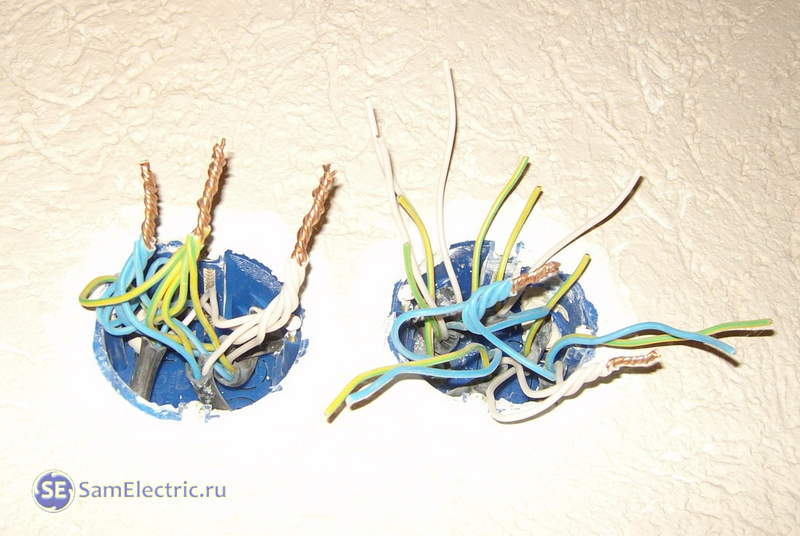Познайте искусство правильного спаивания проводов
Искусство правильного спаивания проводов – это важный навык для всех, кто работает с электрикой. Узнайте, как правильно спаять провода и обеспечить надежное соединение. Этот навык может быть полезен как для профессионалов, так и для домашних мастеров. Не допускайте ошибок в соединениях и обеспечьте безопасность ваших электрических устройств! ⚡����️

Learning how to solder wires is more important than ever. Homeowners are increasingly taking on repairs of home appliances such as dishwashers and refrigerators. When you know how to solder, small appliances like electric teapots no longer need to be discarded when they malfunction. With patience and a little practice, you can learn how to solder wires to circuit boards, metal connectors, and switches for repairs, as well as for fun projects.
In this simple project, you will solder together the exposed ends of two plastic-coated stranded copper wires. No special skills are needed to perform this task. Because the materials you need to solder wires are so inexpensive, you will have ample opportunities to practice on scrap wires before making your final solder joint.
Before You Begin
In lieu of purchasing separate soldering components, you may wish to buy a soldering iron station that includes a soldering iron, stand, and tip cleaner. Since the entire station plugs into an outlet, strain is reduced on the soldering iron cord. This is important to facilitate the delicate hand movements you make when soldering.
Leaded 60/40 solder, composed of 60% tin and 40% lead, has long been used for soldering. It is safe if handled properly. For the utmost safety, choose lead-free solder, composed of 99.3% tin and 0.7% copper.
Make sure that your work area is well-ventilated, especially when working with lead-based solder. Because the tips of soldering irons can range between 600 and 800 degrees Fahrenheit, work on a non-flammable surface; molten solder can drip. If working with lead-based solder, be sure to thoroughly wash your hands after working with the solder. Use eye protection whenever working with solder, no matter the type.

Materials
- 60/40 rosin core solder
- Rosin flux paste
- Heat shrink tubing
How To Solder Wires
Strip the Wires
Strip away 1/2-inch of the plastic coating from the wires with the wire stripper. Try not to leave too much or too little of the plastic coating. Stripping away too little plastic coating will hinder soldering. Stripping away too much plastic coating will expose an excessive amount of copper wire and require you to use more heat-shrink tubing. Be sure to use the correct gauge on the wire stripper so that you do not accidentally cut away strands of wire.
Add the Heat Shrink Tubing
Find the smallest diameter tubing that will fit over the plastic-coated wire. If you choose tubing that is too large, it will not shrink down to the correct size. In terms of length, the tubing should cover the splice, plus another 1/2-inch on each end. Slip the heat shrink tubing onto the wire and put it down the wire about a foot for now.
Join the Wires
Gently flay the individual strands of wire. Push the wires toward each other, interlocking the strands. Loosely twist the meshed wires. If you twist the wires too tightly, the solder will not be able to penetrate. Yet the joint should still remain smaller in diameter than the heat shrink tubing.
Position the Wires
Position the wires so that they are elevated over the work surface. Wires that lay flat may get stuck to the surface by the solder. Alligator clips or even household metal spring clamps can be fashioned to elevate the wires, if necessary.
Add the Rosin Flux
Carefully rub a small amount of the rosin flux paste on the joined wires so that all of the copper is covered. Flux is a material made of either synthetic resin or pine tar resin. Solder wire usually has flux in its core, so though you may not need additional rosin flux to solder wires, it is highly recommended for its many benefits. Using flux will help draw the solder into the meshed wire strands for a cleaner, stronger bond and it helps to reduce oxidation.
Prepare for Soldering
Plug in and turn on the soldering iron. Unroll about six inches of solder so that the end is exposed and ready to use.
Tip
As the soldering iron heats, rub the tip across a wet sponge to remove any previous oxidation. For a new soldering iron heating up for the first time, this is not necessary.
Solder the Wires
Touch the heated tip of the soldering gun to the wire joint. Hold the tip firmly in place for a few seconds to heat up the wire. Touch the exposed end of solder lightly to the wire joint. The heat should cause the solder to instantly melt and draw into the meshed strands.
Shrink the Tubing
After the solder has fully cooled, slip the heat shrink tubing over the joint. Make sure that it is evenly positioned. Run the heat gun over the tubing until it constricts completely.
Soldering Wires to Other Electrical Components
- Rosin core solder is safest to use when soldering electrical wires; acid core is for plumbing (such as copper pipe).
- Solder a wire to a circuit board by putting the tip of the gun between the wire and the board and letting the solder flow rather than trying to manipulate the solder.
- Tin a stranded wire with solder first before soldering it to the circuit board.
- Don’t try to «paint» the solder onto the wire or board with the soldering tip; solder can’t be spread around or moved.
- Avoid letting too much solder puddle on the circuit board or you’ll risk solder touching neighboring circuits.
- Use a clamp or vise to hold a circuit completely steady when soldering.
FAQ
-
How long do soldered wires last?
Soldered wires can be a permanent fix.
-
Do electricians use solder?
Electricians do not solder standard house wiring connections. The only time an electrician might solder is if the project involves installing a home theater, stereo, or router.
-
What are the most common soldering mistakes?
Temperature is usually an issue, which could cause solder to not stick. The solder may be brittle or not bind correctly if it is insufficiently melted. If the solder is overheated, the joint could be burnt. Another common problem is insufficiently wetting the sponge and the pin which can cause tools to gunk up and inhibit a clean flow of solder.

Как правильно Штробить под провод стен?
Штробление стен для проводки – это процесс, который следует проводить очень осторожно, чтобы не повредить конструкцию стены. Вот несколько советов по тому, как правильно штробить под провод стен:
-
Нанесите на стену маркировку того, где будет проходить штроба.
-
Используйте для штробления специальный перфоратор, который позволит быстро и безопасно проделать отверстия в стене.
-
Выберите правильный угол наклона перфоратора, чтобы штроба была не шире, чем необходимо.
-
Перед началом работы проверьте, нет ли в стене электрических или водопроводных коммуникаций, чтобы избежать их повреждения.
-
После того, как вы сделали штробу, очистите ее от пыли и мусора и убедитесь, что в ней достаточно места для провода.
-
Заполните штробу специальным составом для штробления, чтобы зафиксировать провод в правильном положении.
-
Наконец, закройте штробу шпаклевкой или гипсовым раствором и дайте ему высохнуть.
Важно помнить, что штробление стен может быть опасным и сложным процессом, поэтому лучше всего доверить его профессионалам.